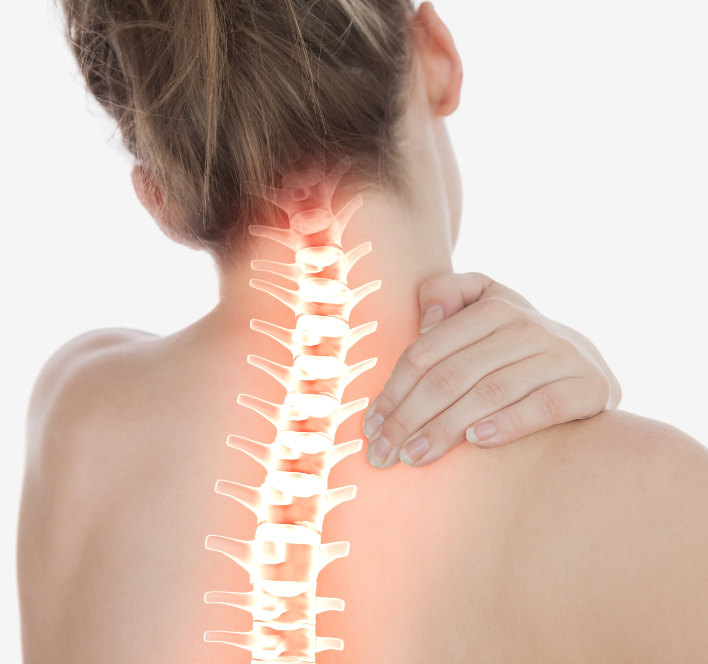

If you’re experiencing neck pain and want a lasting solution to alleviate your symptoms, a surgical procedure that may prove helpful is posterior cervical fusion with instrumentation. Orthopedic surgeons utilize the technique to help stabilize the spine and alleviate painful spinal cord movement or compression by accessing the posterior cervical spine. This procedure is particularly effective in cases of spinal cord compression, where repositioning the lamina can alleviate pressure on the spinal cord.
It’s recommended for patients who need further spinal stabilization or as part of a different posterior cervical procedure, such as laminectomy. Learn what posterior cervical fusion with instrumentation is, what the process entails, and how it can help you. Our team at Orthopedic & Laser Spine Surgery can help you answer any questions you may have and get you the treatment you need to mitigate neck pain.
What Is Posterior Cervical Fusion With Instrumentation?
Posterior cervical fusion with instrumentation surgery is used to treat certain conditions of the upper part of the spine located in the neck. The procedure involves fusing two or more spinal columns in the cervical spine using bone grafts, metal screws, rods, and plates to stabilize the backbone and aid in the merging process.
A neurosurgeon will make a small cut in the back of the neck while the patient is under general anesthesia to access the spine. They then remove any damaged or degenerated discs/bone in the affected area and replace them with bone grafts. Metal screws, rods, and plates are fixed onto the vertebrae to hold them in place as the bone graft fuses and heals.
Posterior cervical fusion with instrumentation is commonly utilized to treat conditions that haven’t responded to non-surgical treatments such as physical therapy or steroid injections. Herniated discs, cervical stenosis, spinal stenosis, and degenerative disc disease are conditions that can be remedied with this procedure. The surgery helps alleviate pain, boost stability and mobility, and mitigate further cervical spine damage. Additionally, the procedure involves decompressing the spinal cord and nerve roots to relieve pressure and alleviate pain.
The surgery helps alleviate pain, boost stability and mobility, and mitigate further cervical spine damage. The stabilization and fusion of the spinal column during the procedure ensure long-term structural integrity.
What Happens During a Posterior Cervical Fusion with Instrumentation Surgery?
During a posterior cervical fusion with instrumentation procedure, the doctor will replace damaged, degenerated discs in the affected area with bone grafts. Additionally, the removal of bone spurs and overgrown ligaments is often necessary to alleviate nerve root compression and improve blood flow to the spinal cord.
To help stabilize the spine and promote fusion, the surgeon then uses rods, screws, cages, and plates, usually made of titanium or other biocompatible materials that are well tolerated by the body. This process, known as posterior fusion, ensures proper immobilization and enhances the healing process.
These devices hold the vertebrae in place while the bone grafts heal. After the bone grafts and instrumentation have been placed, the surgeon closes up the incision and covers it with a sterile dressing. Patients are then taken to a recovery room, where they’re closely monitored to ensure a seamless recovery.
They remain hospitalized for several days for pain management and monitoring purposes. Rehabilitation is recommended after being discharged from the hospital. It primarily consists of physical therapy to help patients regain strength and mobility in the upper back and neck area.
Postoperative Care After Posterior Cervical Fusion With Instrumentation
Aftercare following a posterior cervical fusion with instrumentation surgery is critical for a successful recovery from the operation. Postoperative care may include:
- Pain Management: Patients are likely to experience some discomfort following the procedure. Pain medication is prescribed to help manage this discomfort. Patients should follow the medication instructions closely and report any side effects or concerns to their surgeon.
- Immobilization: The patient may need to wear a cervical collar or a type of neck brace for several weeks after the surgery. This helps to limit movement in the neck and promotes proper fusion healing.
- Physical Therapy: The patient is likely to begin physical therapy soon after the surgery to help improve their range of motion, decrease pain and stiffness, and build strength in the upper back. A physical therapist will work with the surgical patient to create a personalized rehabilitation plan.
- Activity Restrictions: The patient needs to avoid certain activities and movements for several weeks after the surgery, such as heavy lifting or twisting of the neck. The healthcare provider will provide specific instructions on the physical activities to avoid and for how long.
- Follow-Up Appointments: The patient should attend follow-up appointments with their healthcare provider to monitor their recovery and confirm the fusion is healing correctly. Imaging tests such as X-rays or CT scans may be necessary to assess the progress of the fusion.
Patients are encouraged to follow all postoperative care instructions to avoid surgical complications and achieve the best possible outcome.
Should they present new symptoms or the condition worsens, patients need to contact their doctor right away. As with any surgical procedure, potential complications may occur with posterior cervical fusion with instrumentation. These problems may include infection, nerve damage, blood loss, or instrumentation failure. Your orthopedic surgeon will discuss the surgery’s overall benefits and related risks to help you make an informed decision about this treatment option.
Consult the Experienced Florida Spine Specialists at Orthopedic & Laser Spine Surgery Today
At Orthopedic & Laser Spine Surgery, we understand how debilitating neck pain can be, which is why we offer multiple minimally-invasive treatment options, including posterior cervical fusion with instrumentation. Our skilled and compassionate neurosurgeons will work with you using a tailored treatment plan to help improve your symptoms and ultimately relieve related pain.
We employ leading technology to perform a wide range of surgical and non-invasive spinal procedures, so every patient has the best care and increased chances of recovery. CallOrthopedic & Laser Spine Surgery at (855) 853-6542 or submit ouronline contact form to book an appointment.
Q&A
What is a bone graft, and why is it used in spinal fusion surgeries?
A bone graft is a surgical procedure that involves transplanting bone tissue to aid in the healing and fusion of spinal vertebrae. In spinal fusion surgeries, such as posterior cervical fusion, bone grafts help two or more vertebrae fuse together, providing stability and promoting the spine’s healing process. This is particularly crucial when treating conditions like spinal deformity, where the spine needs added support to maintain proper alignment and function.
What is spinal fusion, and how does it help in posterior cervical fusion surgery?
Spinal fusion is a surgical procedure used to join two or more vertebrae, eliminating movement between them. In posterior cervical fusion surgery, spinal fusion helps stabilize the neck by using bone grafts and hardware like rods and screws. This process ensures that the vertebrae heal together and minimizes painful movements that could otherwise aggravate nerve roots or the spinal cord.
What conditions might require a posterior cervical procedure?
A posterior cervical procedure is often required for conditions such as cervical stenosis, herniated discs, or degenerative disc disease in the cervical spine. It is also used to treat spinal deformities and compression of nerve roots that cause pain, numbness, or weakness. By accessing the spine from the back of the neck, the surgeon can remove damaged tissue, alleviate pressure on nerve roots, and stabilize the spine using a bone graft.
How does posterior cervical fusion with instrumentation alleviate nerve root compression?
In posterior cervical fusion with instrumentation, the surgeon removes damaged or overgrown tissue, such as bone spurs, that press on the nerve roots. By using bone grafts and securing the spine with screws and rods, the procedure ensures that the affected vertebrae remain stable, relieving the pressure on nerve roots. This helps reduce pain and restore function in the neck and arms, as nerve roots are essential for transmitting signals between the spinal cord and the rest of the body.
How can posterior cervical fusion with instrumentation benefit patients with lumbar spine issues?
Although posterior cervical fusion focuses on the neck, stabilizing the upper spine can benefit patients with lumbar spine issues by improving overall spinal alignment and reducing stress on lower vertebrae. Addressing problems higher in the spine can relieve symptoms like nerve root compression or spinal deformity that extend to the lumbar spine, contributing to pain relief and improved mobility throughout the back.
